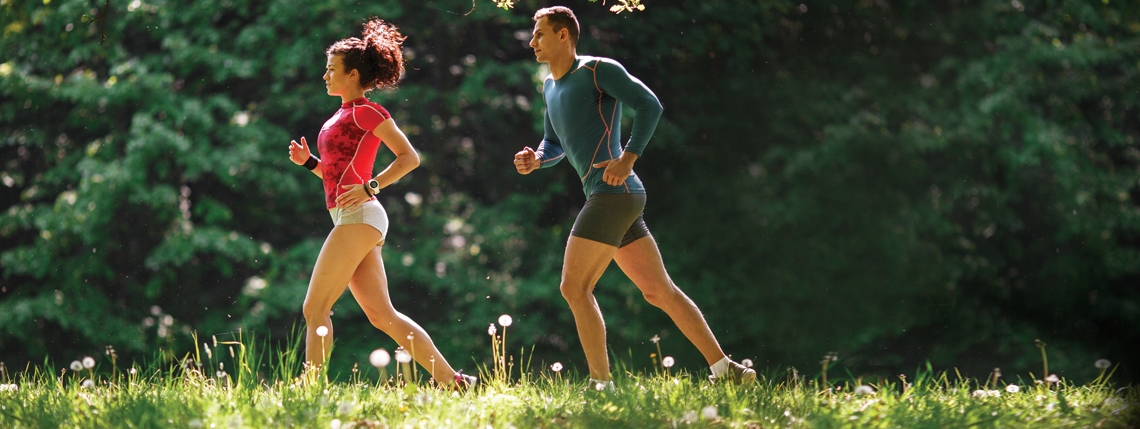With the London Marathon just around the corner, tapering is now well underway for this year’s runners. However, if you’re left feeling inspired for next year’s event, or your client has a marathon later in the year, take a glance over Human Kinetics running suggestions.
1. Back extension press-up
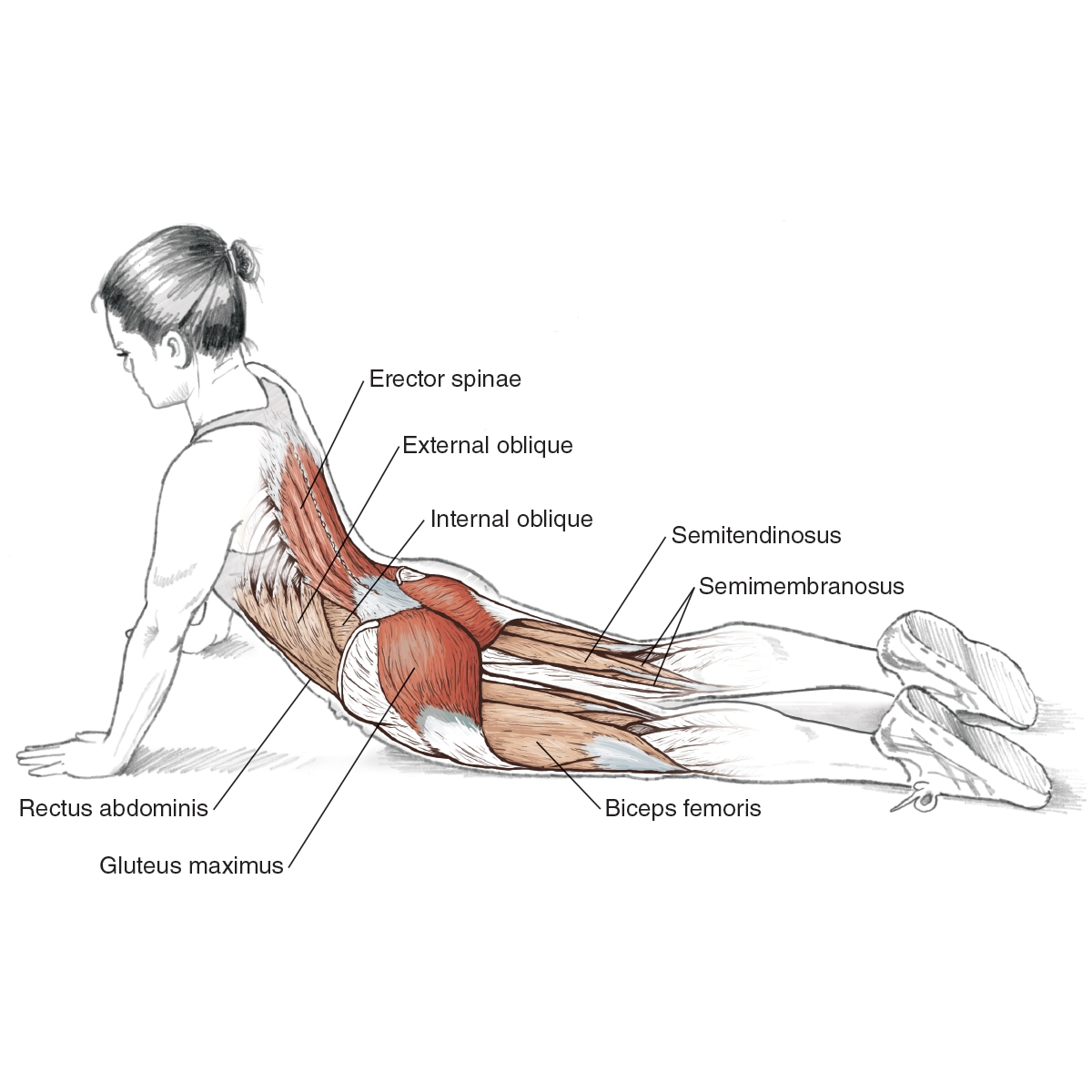
Execution
- Lie prone on the floor with the arms in the push-up position and the legs outstretched; keep the body rigid and in a straight line
- Press up with the arms only until the torso is off the floor and hold this position for 10-15 seconds, breathing throughout
- Lower the arms, bending at the elbows, and return to the original position
Muscles involved
Primary: Erector spinae (iliocostalis, longissimus, spinalis), gluteus maximus
Secondary: Hamstrings (semitendinosus, semimembranosus, biceps femoris), rectus abdominis, external oblique, internal oblique
Running focus
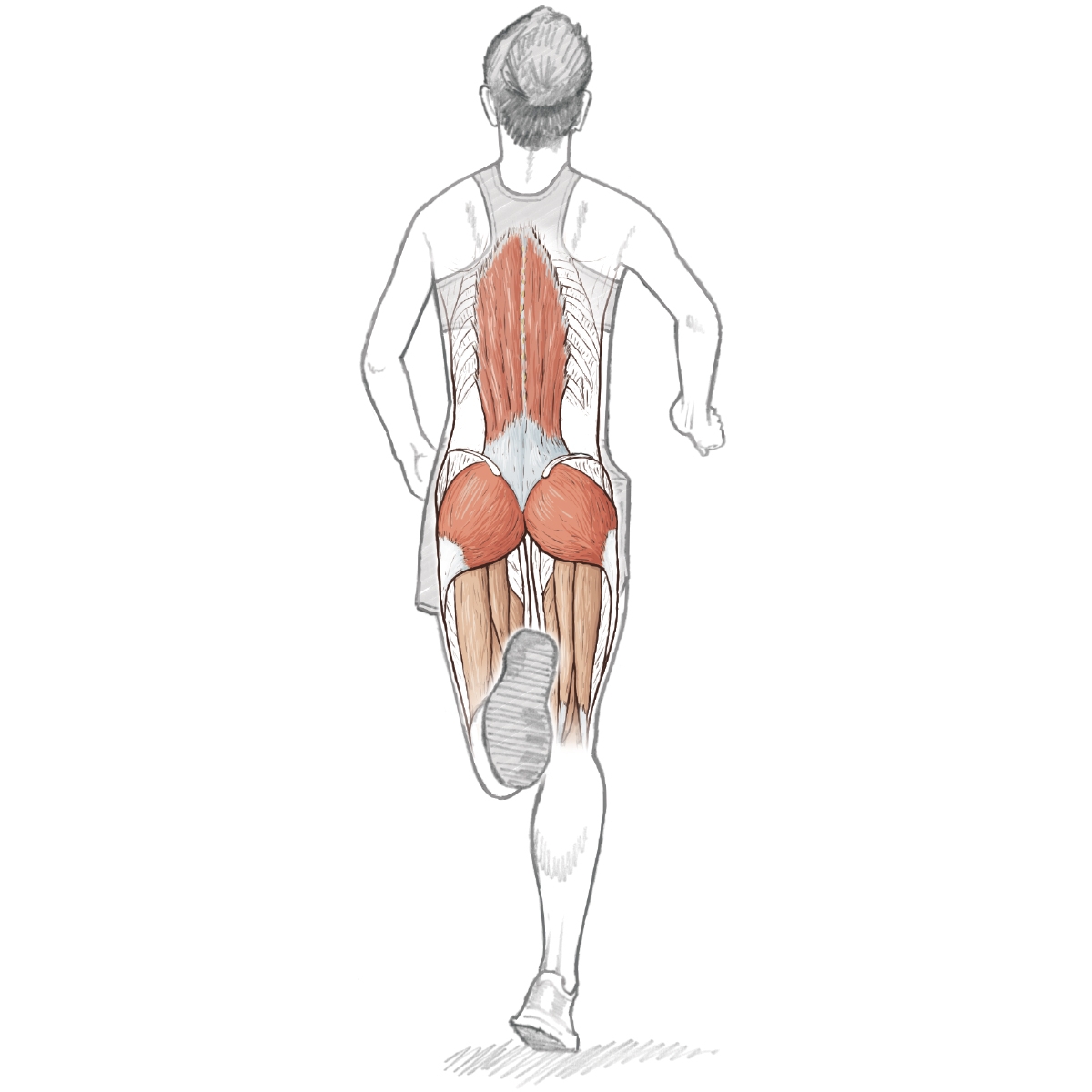
This is a very simple exercise that should not be confused with the push-up. It helps strengthen the muscles and tendons of the erector spinae; the antagonists for the rectus abdominis muscle. The exercise also strengthens and stretches the support structure of the sacral and lumbar spine. In this way, it helps the pelvis rotate and twist properly, and mitigates forward tilt of the pelvis, which can result from performing too many abdominal strengthening exercises and can lead to imbalance between the abdominals and the muscles of the lower back.
Unfortunately, emphasising the core exercises sometimes devolves into emphasising the abdominals to the near exclusion of the glutes and the lower-back muscles. In the absence of strong glutes and a supportive lower back, the hamstrings may be unable to generate sufficient muscular power, despite their having been strengthened properly. Essentially, the strongest muscles are only as strong as the weakest link in the kinetic chain allows them to be.
Proper movement of the pelvis is critical in the gait cycle. Pelvic misalignment, which may result from imbalance between the abdominal muscles and the lower-back muscles, can cause injuries that impede running performance despite good cardiothoracic fitness.
2. Bridge with leg kick
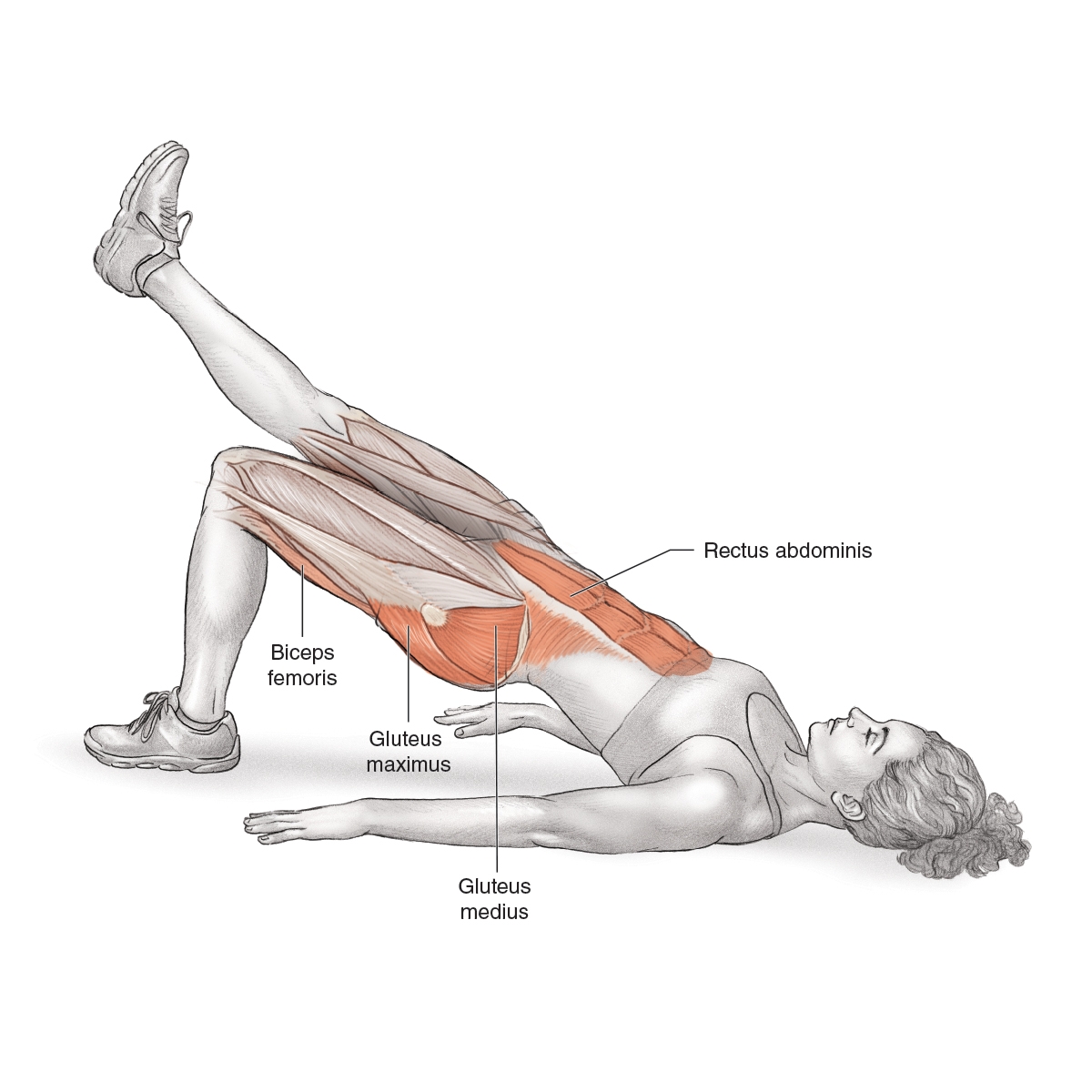
Execution
- Lie supine (on your back) with both knees bent
- Lift your hips into the air as high as you can, simultaneously squeezing your glutes and keeping your scapulae on the floor
- Once you are in the bridge position, extend one lower leg straight out and hold for 5 seconds
- Lower the leg, then kick and hold with the opposite leg
Muscles involved
Primary: Gluteus maximus, gluteus medius, gluteus minimus, rectus abdominis, transversus abdominis
Secondary: Hamstrings (semitendinosus, semimembranosus, biceps femoris)
Technique tips
Maintain full extension in the bridge position (don’t let the core sag) while slowly raising and lowering each leg. Raise to full extension without hyperextending.
Running focus
As mentioned in the introduction to these exercises, a runner who has weak glutes – or a problem with glute ‘firing’ patterns – requires other muscles to assume the responsibility of the glutes. Ideally, even for distance runners, the glutes (not the quadriceps) should serve as the powerhouse of lower-body strength. However, since this exercise uses only bodyweight, it primarily develops the firing of the muscle. In other words, strength development is secondary, therefore, bridges can be complemented by squat exercises that focus on developing strength.
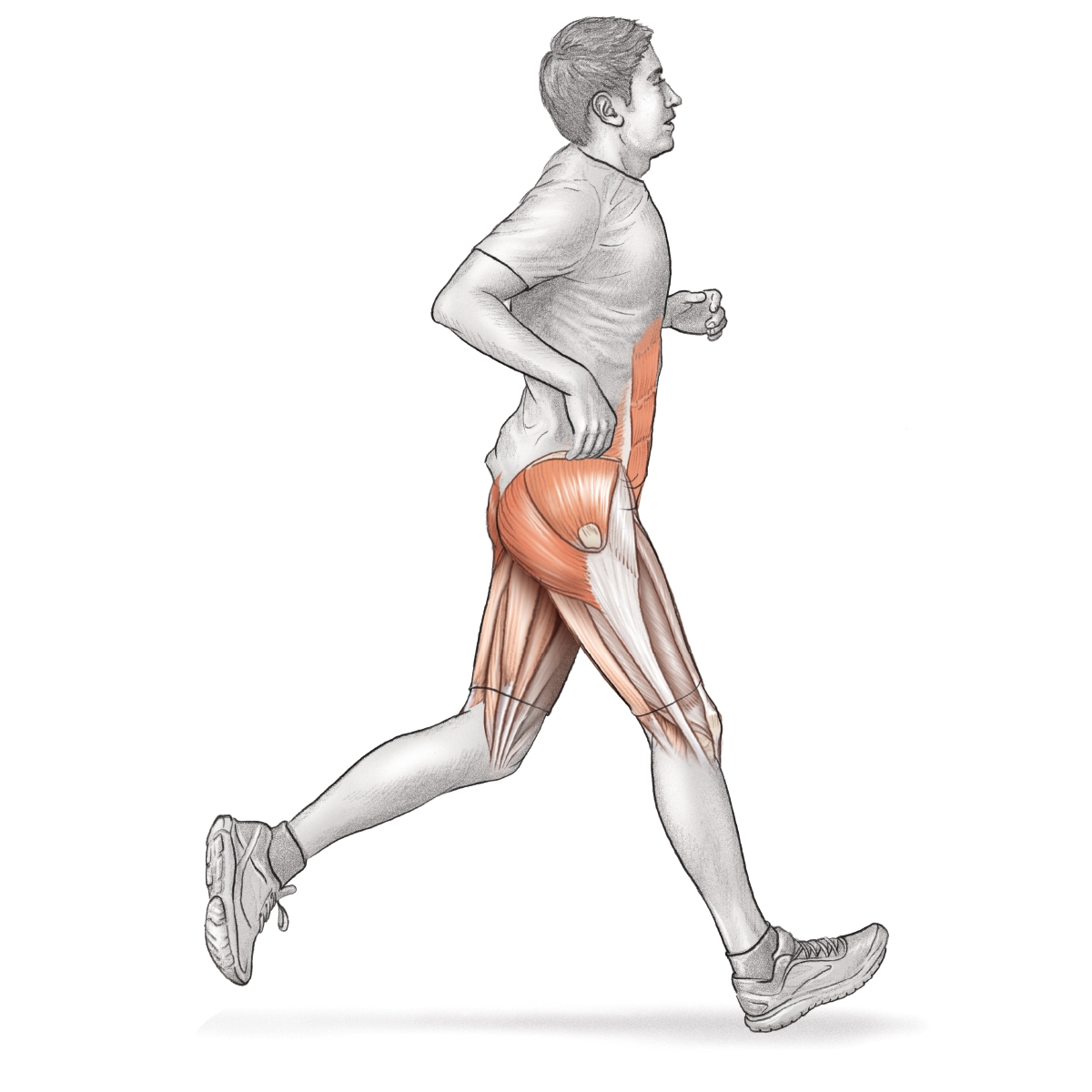
Variation: Weighted bridge with leg kick
Assume the bridge position with the legs bent and a dumbbell resting on the front of each upper thigh (anterior hip). Perform the exercise in the usual manner with the dumbbell increasing the resistance.
3. Sliding leg curl
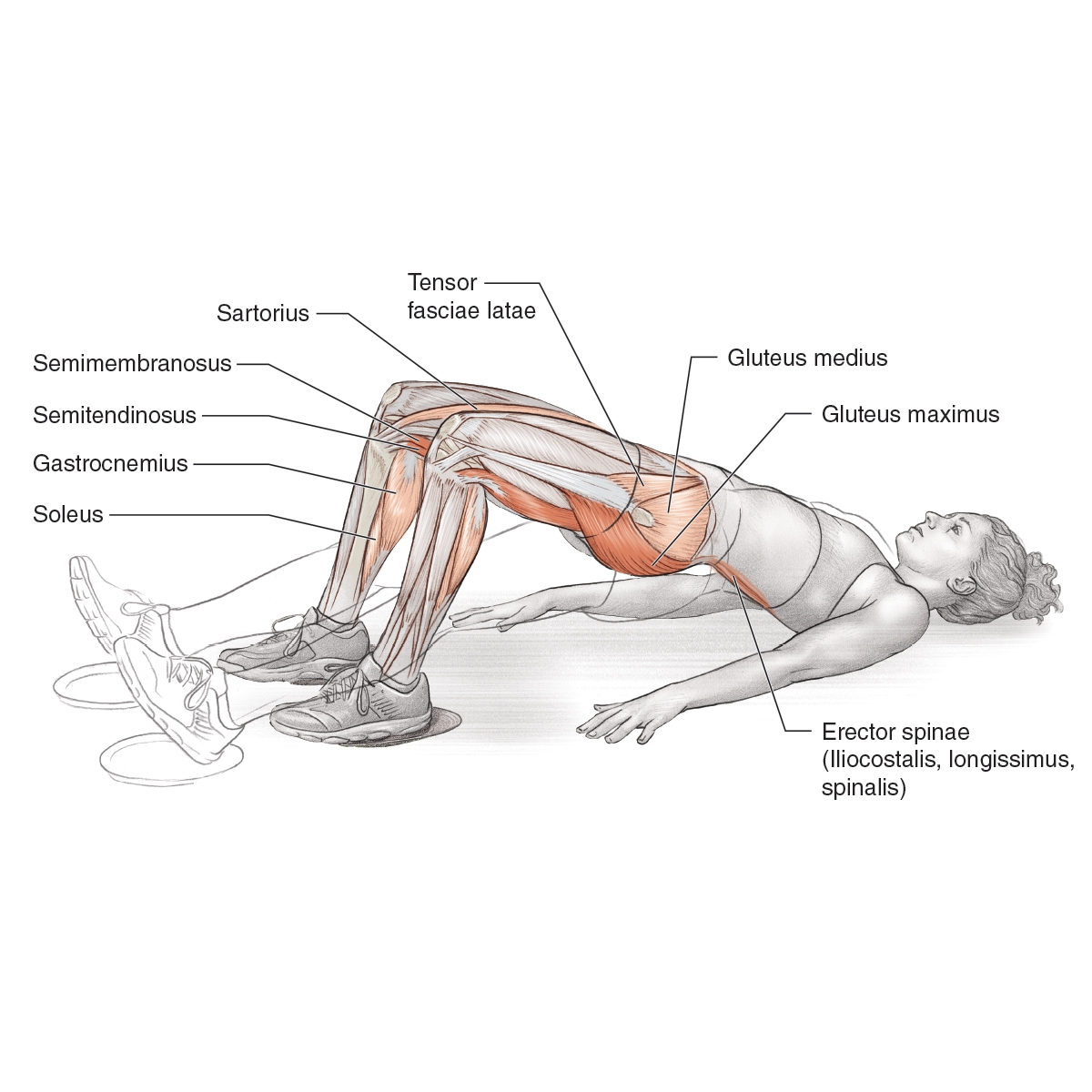 Execution
Execution
- Lie supine on a smooth floor with the knees steepled and place the feet slightly closer than shoulder-width apart with each foot resting on a plastic gliding disc, then bridge up as high as you can into a single plane from neck to knees
- Extend the legs fully by sliding the feet along the floor on the discs, thus lowering the body to prone position
- Immediately upon full extension, pull the feet on the gliding discs back while raising the hips back to the original bridge position
Muscles involved
Primary: Hamstrings (semitendinosus, semimembranosus, biceps femoris), gluteus maximus, erector spinae (iliocostalis, longissimus, spinalis)
Secondary: Adductor longus, adductor magnus, gluteus medius, gluteus minimus, tensor fasciae latae, sartorius, piriformis, soleus, gastrocnemius
Safety tip
Keep the shoulders and head on the floor.
Running focus
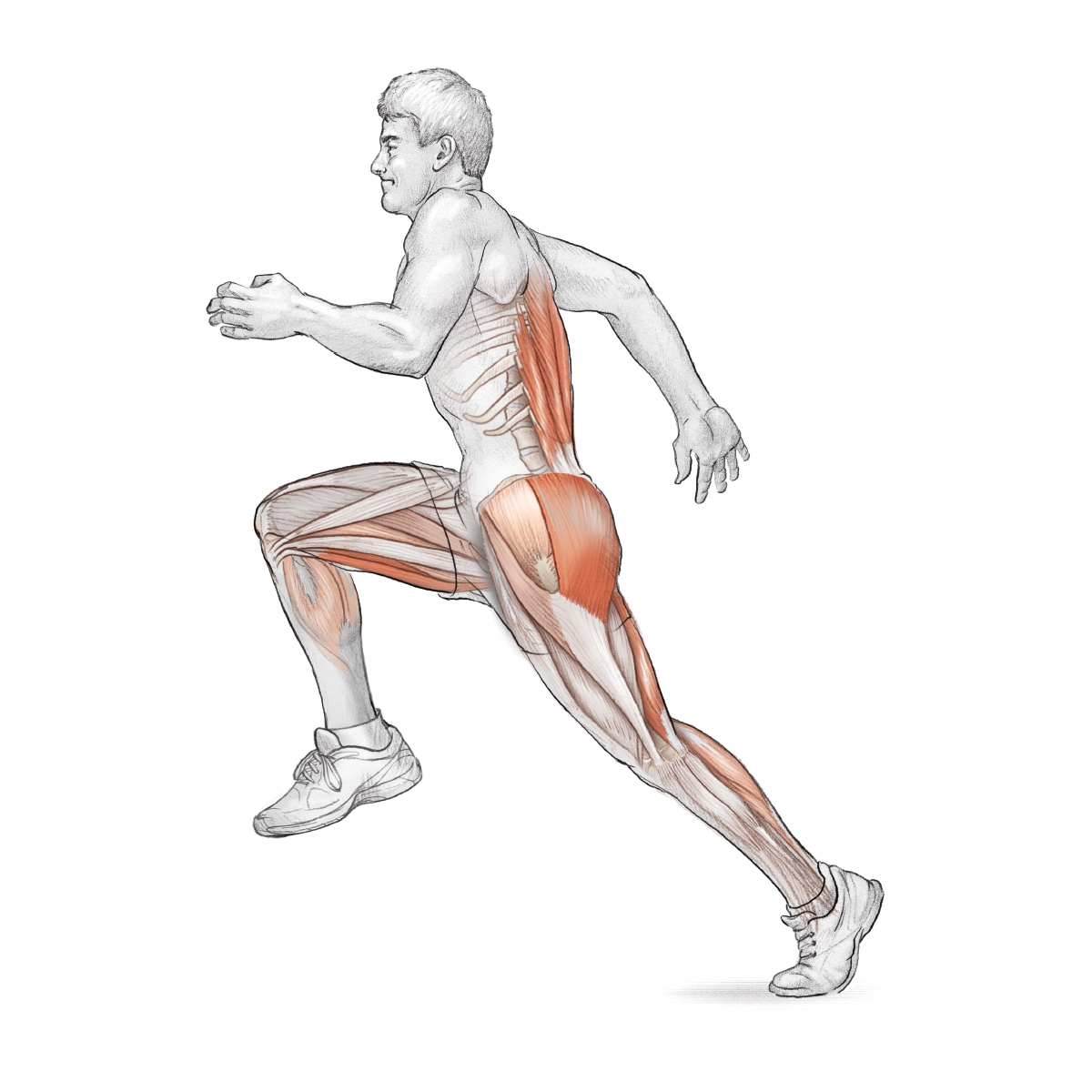
The sliding leg curl is a posterior chain exercise that emphasises both knee and hip flexion (in contrast, the hamstring curl works only knee flexion). This exercise is preferable to other, less functional hamstring exercises because it also requires core stabilisation. The ultimate position attained is full extension, which mimics the body position used while running.
4. Lumbar hyperextension with alternating arm and leg raises
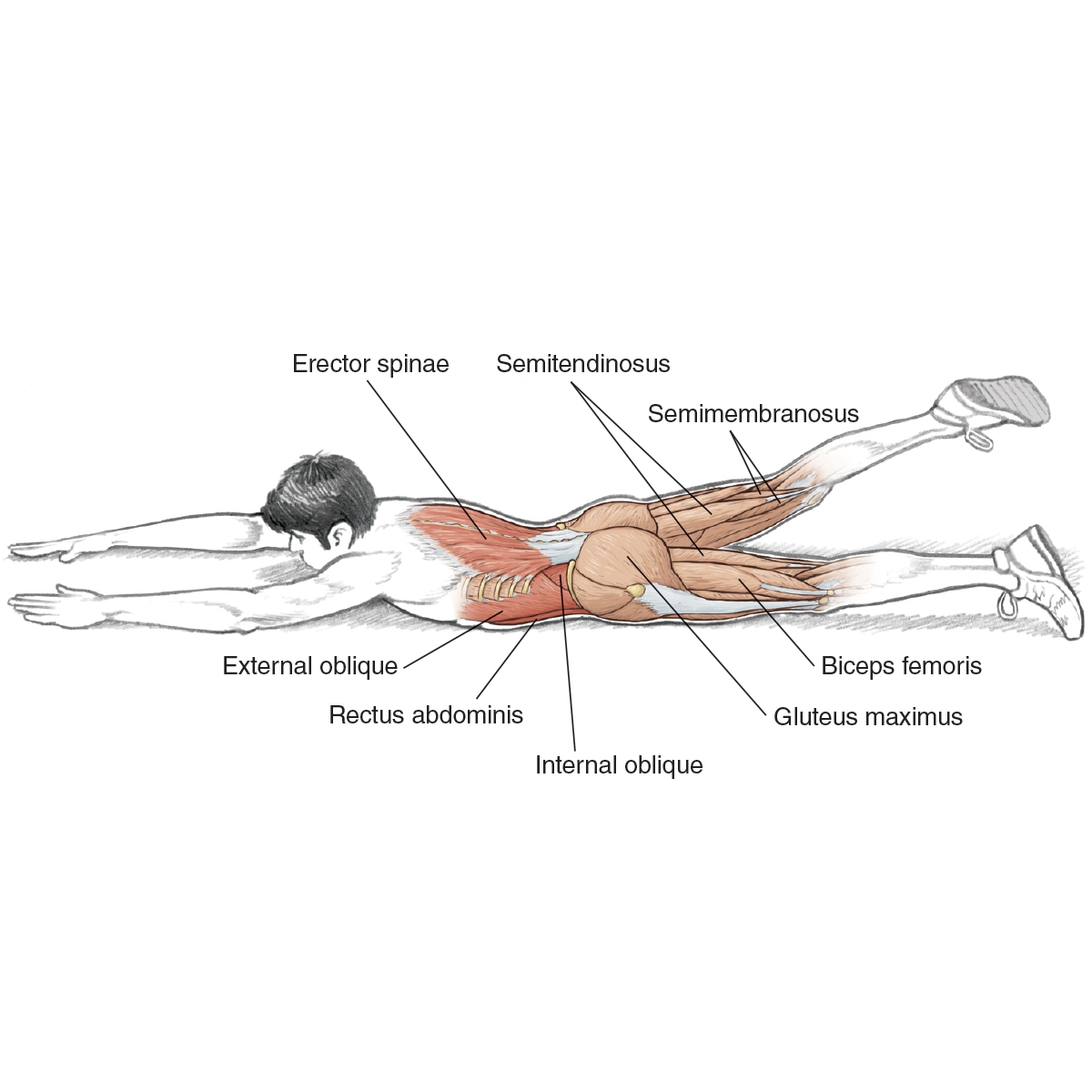
Execution
- Lie prone on the floor with the arms and legs outstretched; keep the body rigid and in a straight line
- Raise the left arm and the right leg 3-4 inches (8-10 cm) off the floor; hold this position for 10-15 seconds, breathing throughout
- Simultaneously lower the left arm and right leg, and raise the right arm and left leg
Muscles involved
Primary: Erector spinae (iliocostalis, longissimus, spinalis), gluteus maximus
Secondary: Hamstrings (semitendinosus, semimembranosus, biceps femoris), rectus abdominis, external oblique, internal oblique
Technique tips
This exercise can also be performed on a Roman chair, in which case gravity plays a greater role in increasing resistance. Of course, Roman chairs are rarely around when you need them, and performing this exercise on the floor works just as well. All of the movement should be generated by the glutes and the muscles of the lower back.
Safety tip
Performing this exercise requires hyperextension of the back. Typically, this is not a problem, but for runners with chronic back pain or disc issues, press-ups are safer.
Running focus
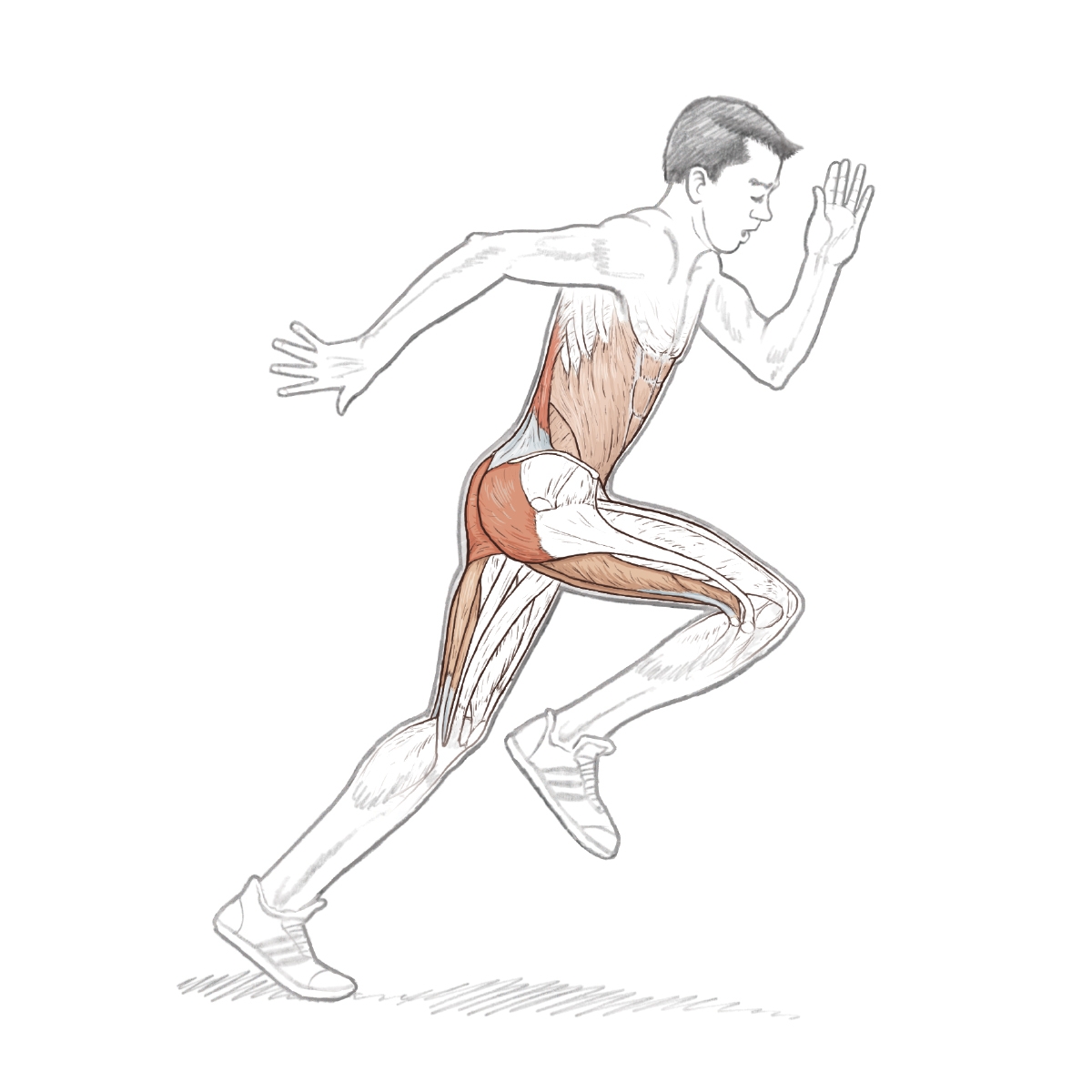
Lumbar hyperextensions can be performed in many ways, but the goal remains the same: to both strengthen and stretch the muscles of the lower back, the glutes, and to a lesser extent the abdominals, in order to help provide the appropriate pelvic tilt during the running gait cycle. A misaligned pelvis causes a chain reaction of misalignment that results in poor running form and wasted energy. To avoid this pitfall, the muscles of the back, the abdominals, and the glutes must not only work in unison, but also work to balance each other while still generating enough strength to perform the exercise. This dynamic is very similar to the way in which the core works during running. Because the pelvis rotates and twists, the core must stabilise dynamically by reacting to terrain shifts, turns and missteps.
The above extract and illustrations are from Running Anatomy by Puleo and Milroy. Human Kinetics has published a vast array of books to help runners become faster. To view the titles, click here: https://humankinetics.me/2018/07/06/11-best-running-books/


